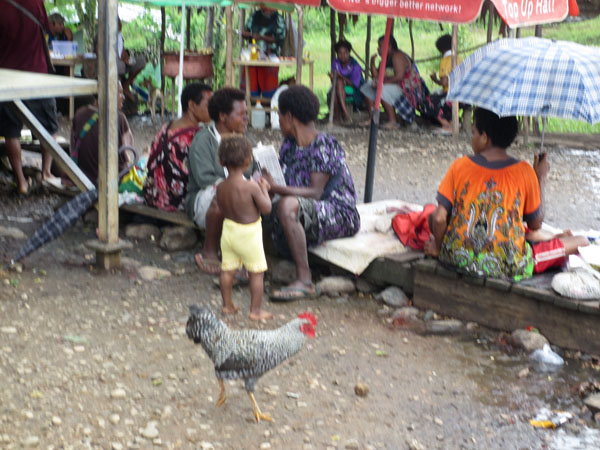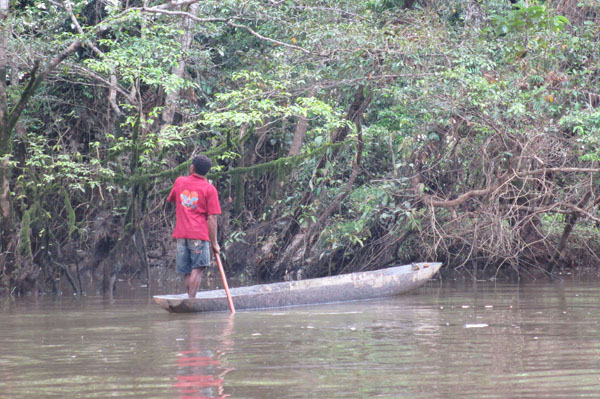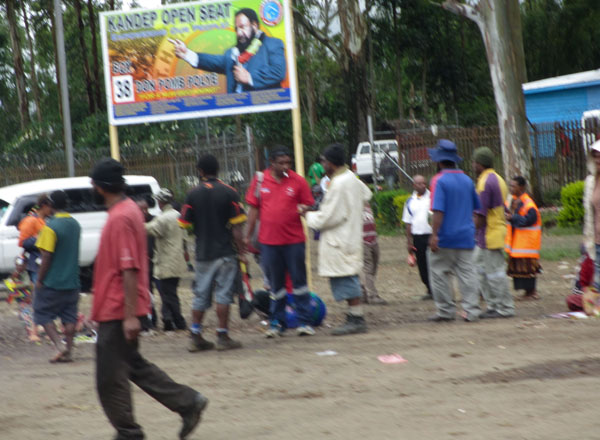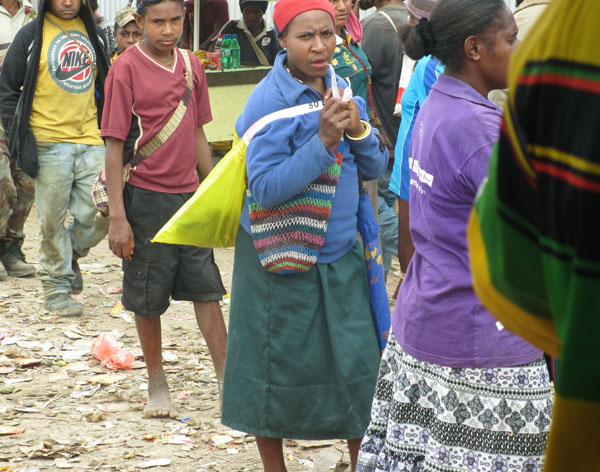I was one of 8 or 9 participants in Rockjumper Birding’s tour of Papua New Guinea (PNG), including its smaller, adjacent island of New Britain, from July 18 through August 8, 2012. PNG is a large, mountainous island located near the equator in the southwest Pacific Ocean, (Oceania) generally north of near-by Australia. PNG occupies the east half of the island of New Guinea. The west half of New Guinea belongs to Indonesia. PNG is about the size of California and has a population of 6-7 million people. By comparison, the population of California is about 38 million.

Over 800 languages are spoken by the natives of PNG, more than 10% of the total languages of the world. Many of the languages are spoken only by tribes occupying certain villages, or small groups of villages. Languages are often unrelated to any other, i.e., are not dialects or accents, and the speakers of one language often cannot understand their neighbors. Most of the residents still reside in the interior of the island (the Highlands) where they engage in subsistence agriculture (mostly yams and pigs).

Literacy in any language is less than 50%. There is no road system connecting the major population centers (Port Moresby and Lae) with the rest of the country. Transportation is mostly by air or water.

Until the 1900s headhunting and cannibalism were practiced by some of the interior tribes. Land ownership is vested, if at all, in the community, or tribe or particular families within an area. In general, an individual cannot pass ownership of land to other individuals. Violence among neighboring tribes protecting their turf has long been an accepted way of life. Even today, many of the men carry machetes wherever they go. This has created serious problems within the cities as migration from the country-side to the cities is increasing, and many of the new arrivals bring with them their old animosities.
The Island was very late to be taken over by Europeans. The Germans annexed the north half of PNG in 1885 and held it until after World War I (1918). The British took over the south half about the time the Germans claimed ownership of the north half. They remained in control until 1902 when they turned it over to Australia. The Australians continued to administer the south half of PNG along with the former northern German area until the Japanese liberated PNG in 1941. After the loss of over 200,000 lives of Japanese and Allied soldiers, sailors and marines on PNG during World War II, Australia again administered PNG until the mid-1970s, when PNG became independent. To the surprise of many, PNG decided it wished to be a part of the British Commonwealth of Nations, and so the head of state in PNG is Queen Elizabeth.
The principal spoken language of PNG is Pidgin English, called “Tok Pidgin”. Other official languages are English (not widely spoken) and Motu (spoken by a diminishing number of older residents). Many of the residents also speak (or only speak) one of the over 800 languages which still prevail throughout the island. I saw quite a few people reading one of two English language newspapers, which have good coverage of PNG events, especially the elections which were just then concluding, as well as a good sampling of world news.

The people of PNG are generally quite poor. At least half of the many people I saw wore no shoes.

PNG has considerable natural resources, such as gold, copper and nickel, and mining is a source of income for the country. Most of the mining operations are Australian controlled. Oil and gas is present is substantial amounts, and a couple of American companies are actively developing this resource. Recent economic performance has been among the best in the world, but it started from a long way down.
I was attracted to PNG primarily because it is the only place in the world to see Birds of Paradise. The Birds of Paradise family (Paradaisidae) is arguably the most spectacular of all over 200 families of birds throughout the world. I saw most of the Birds of Paradise that could reasonably be expected on the itinerary we followed. These, as well as the other birds seen on this exciting trip, will be noted in the posts to follow.
